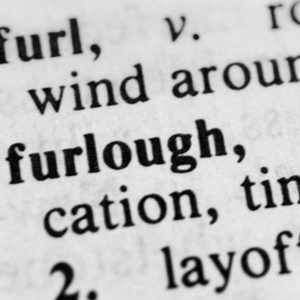
Just as we thought the pandemic was easing and we could start to recover from job losses, rising oil prices and potential interest rate increases may again affect the job market. Read on to learn about furloughs, layoffs, and COBRA. You’ll also learn about COBRA eligibility, qualifying events, and how much coverage costs.
Furlough or Layoff
Let’s start by taking a look at the difference between furloughs and layoffs.
A furlough is a pause of your job status, ending on a specific date. While a temporary situation, furloughs can be extended or later switched to a layoff. A furloughed employee receives a forced, unpaid leave of absence, but that person is still considered an employee.
A layoff, however, is a job stoppage that does not include a planned date for returning to work. Employment is permanently terminated and any relationship with the company ends.
If your situation fits into one of these but you aren’t sure which, check with your HR department or consult an employment attorney.
COBRA Eligibility from Qualifying Events
A “qualifying event” is a life change that causes loss of healthcare insurance. The affected employee has at least 60 days to choose whether to continue their healthcare coverage. Examples of qualifying events include:
- Reduction in work hours to below the threshold for insurance eligibility
- Involuntary job loss for a reason other than gross misconduct
- Divorce or legal separation from the covered employee
- Dependent of the covered employee, who is now deceased
- Becoming eligible for Medicare
Employees who have experienced a layoff are eligible for full COBRA benefits during their work pause. For employees who are furloughed, though, it is not so simple. The employer decides how much of the prior benefits are available through COBRA, usually after consulting their carrier and their group health plan documents.
Who Pays and How Much?
Continued healthcare coverage through COBRA is usually paid for by the covered individual. Even if the employer contributed a portion of the premium cost during active employment, the employee is responsible for the entire cost of each monthly premium on COBRA, plus a 2% administrative fee. However, the employee is able to pick which coverages to continue and who will continue to be covered (themselves and/or dependents), which could change the cost.
In response to the COVID-19 health crisis, the American Rescue Plan provided subsidies to cover the full cost of COBRA premiums. The subsidy ended in September 2021 and has not been renewed.
COBRA Election Extensions During COVID-19
On April 29, 2020, the IRS and the Department of Labor issued COBRA relief rules. Per this ruling, employers “must disregard the period from March 1, 2020, until sixty (60) days after the announced end of the National Emergency or such other date announced by the Agencies in a future notice (the “Outbreak Period”) for all plan participants, beneficiaries, qualified beneficiaries, or claimants.” The rule applies to the:
- 30-day period (or 60-day, if applicable) for special enrollment under ERISA
- 60-day election period for COBRA continuation coverage
- Date for making COBRA premium payments
- Date for people to notify the plan of a qualifying event
In February 2022, President Biden again extended the National Emergency, which also extends the “Outbreak Period” for the above rules. As of this writing, there is no specific expiration date for the latest extension.
Beneliance has provided Arkansas employers with comprehensive third-party employee benefits administration and compliance services since 1996. Please enter your email (above right) to receive notifications about new blog articles as they are published.



